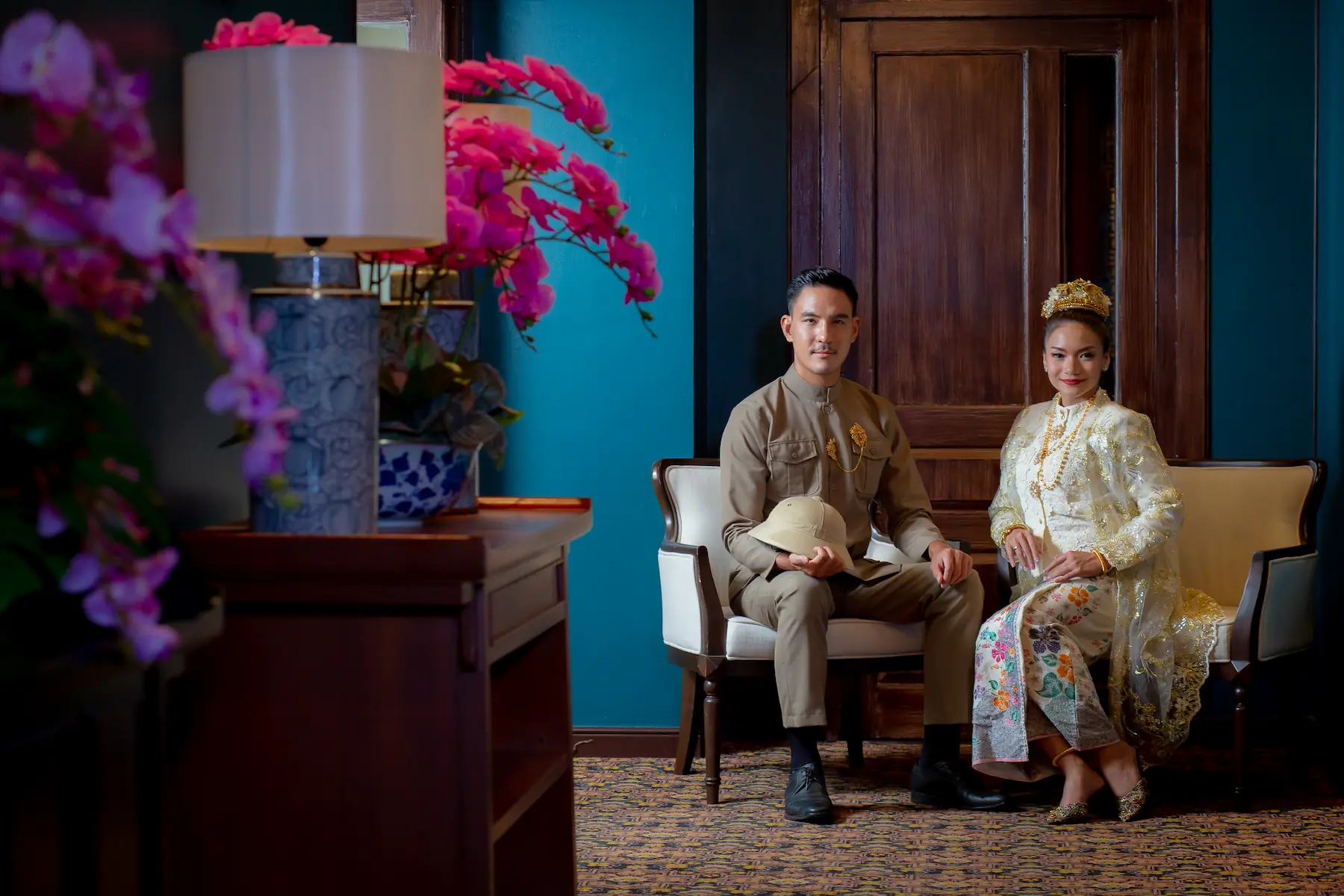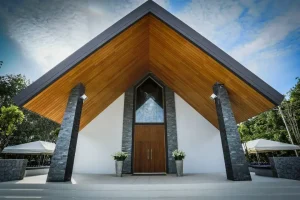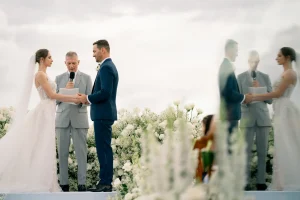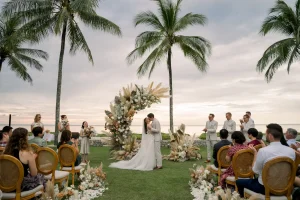The Peranakan wedding ceremony, known as the “Baba Nyonya” wedding, is one of Southeast Asia’s most fascinating cultural traditions, blending Chinese heritage with local Malay customs in a spectacular display of historical significance and artistic beauty. This centuries-old tradition is particularly prominent in Phuket and offers a window into the rich cultural tapestry of the region’s Chinese diaspora.
Historical Context and Cultural Significance
The Peranakan tradition emerged during the reign of King Rama I of Thailand when significant Chinese migration, particularly from the Hokkien community, occurred due to political unrest and economic hardship in China. These immigrants, predominantly young men, settled in various regions including Phuket, Singapore, and Malaysia, eventually intermarrying with local women. The term “Peranakan” itself comes from Malay, meaning “local-born,” while “Baba” refers to the men and “Nyonya” to the women of this unique cultural fusion.
The Wedding Ceremony: A Tapestry of Gold, Tea, and Time-Honored Rituals
Traditionally lasting seven days and seven nights, modern Peranakan weddings have been condensed to a single day while maintaining their core ceremonial elements. The celebration begins with a magnificent procession featuring:
- The “Pothong” musical ensemble leading the way with traditional instruments
- The groom arriving in a luxury car, reflecting the prosperity associated with Peranakan culture
- An elaborate dowry procession carrying “Huatna” (small Chinese baskets) containing valuable gifts and “Siegna” (large Chinese baskets) filled with traditional offerings
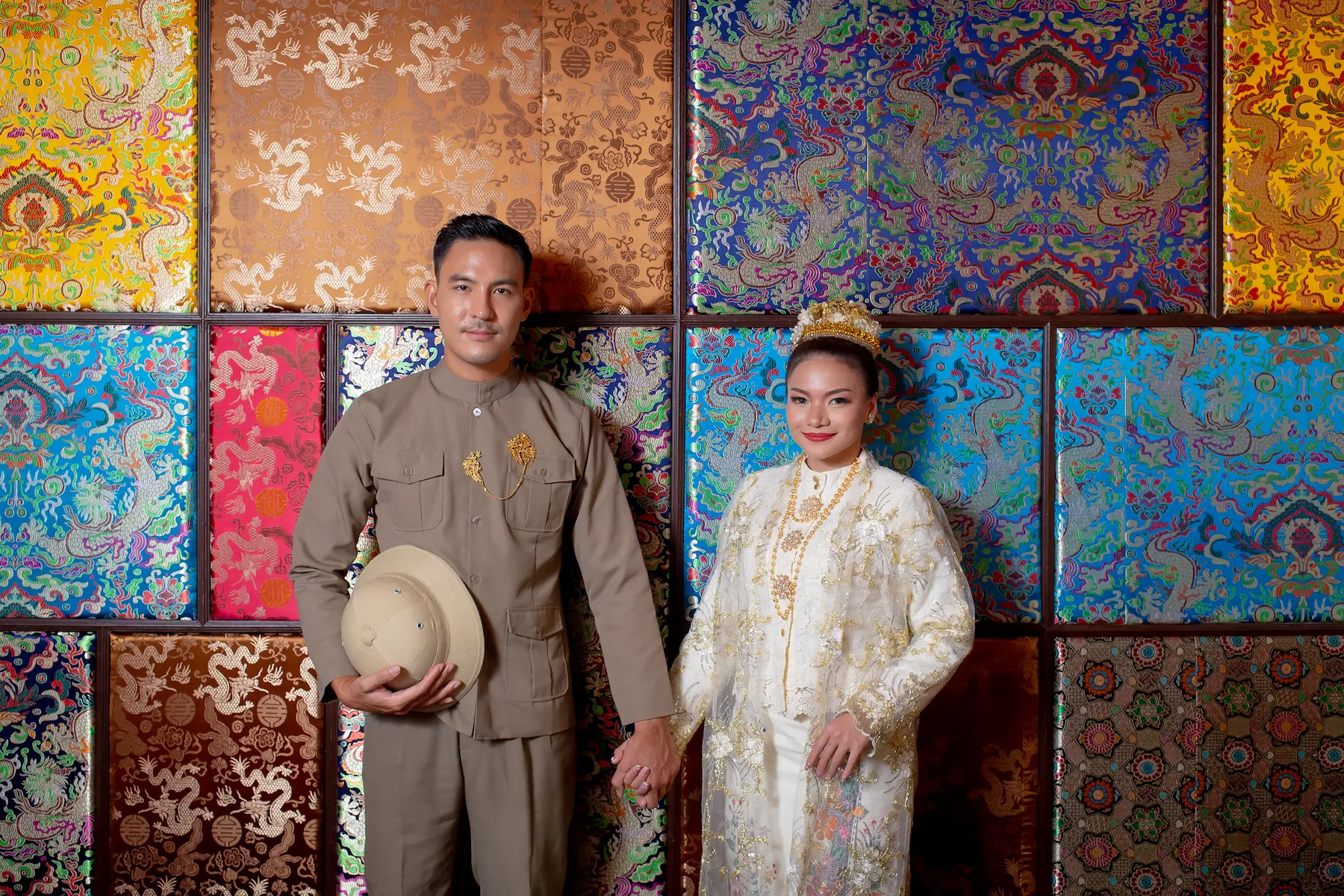
The wedding also includes several significant rituals:
- The “Pang Teh” ceremony – a traditional tea ceremony honoring elders
- Prayers at local Chinese temples, particularly those dedicated to Guanyin for fertility blessings
- A formal reception featuring intricate customs and traditional entertainment
Bridal Attire: The Art of Peranakan Wedding Couture
The bride’s ensemble represents perhaps the most striking aspect of a Peranakan wedding. Key elements include:
- The Kebaya: A delicate white lace inner blouse with long sleeves and a traditional collar
- The Sarong: A matching batik fabric paired with an ornate overcoat
- The Kerosang: A set of three elaborate gold brooches adorning the outer garment
- The Huat Kuan: A spectacular golden crown featuring phoenix motifs and moving floral elements
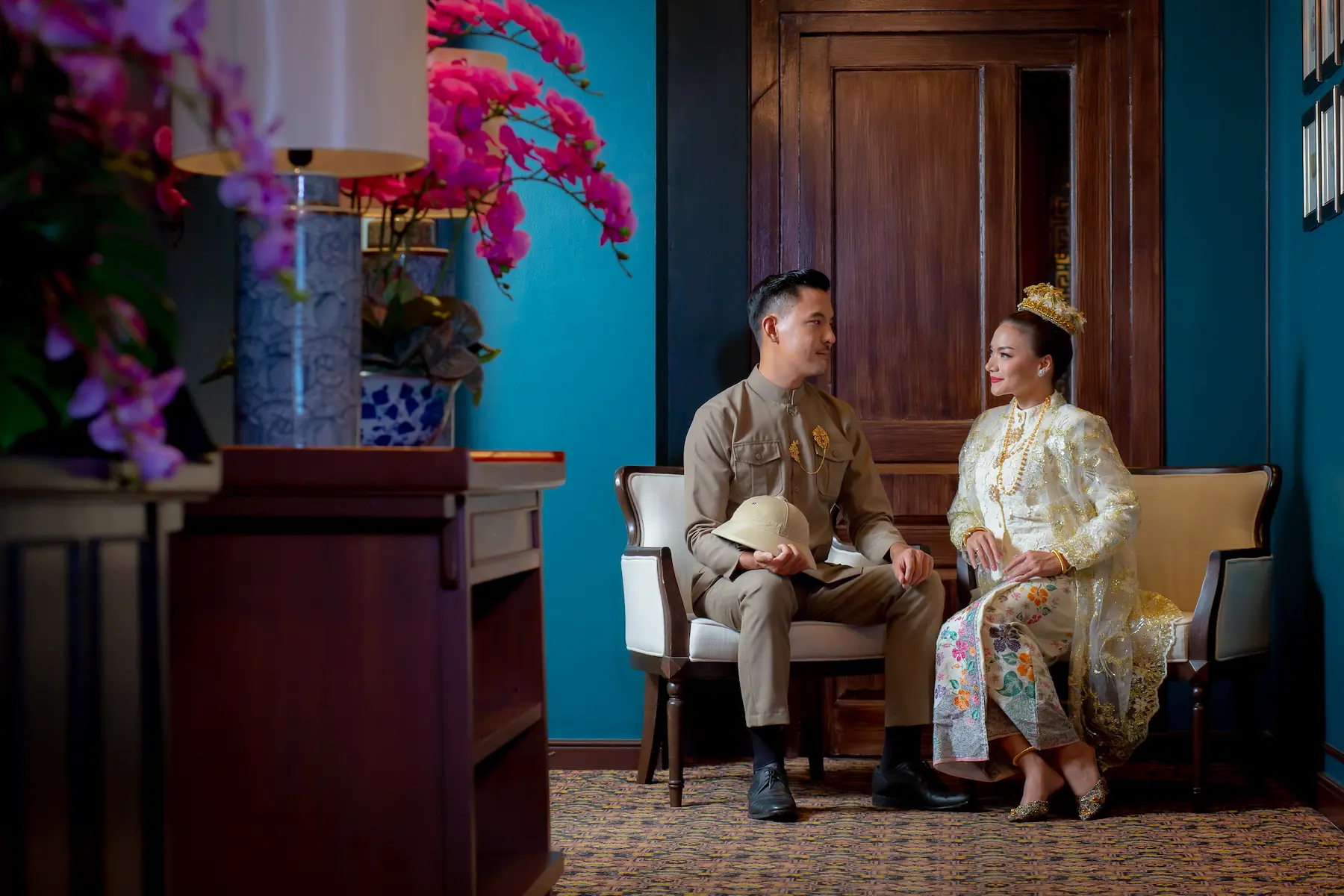
The Significance of the Crown
The golden crown worn by Peranakan brides carries deep symbolic meaning. The phoenix decoration represents nobility and grace, while the moving flowers symbolize the bride’s anticipation of meeting her groom. This crown, traditionally crafted from pure gold and pearls, remains one of the most prestigious elements of the ceremony.
Tradition in Motion: Preserving Heritage in Modern Times
While maintaining its core cultural elements, modern Peranakan weddings have evolved. The groom typically wears a Western-style suit, often accompanied by traditional accessories like gold chains or brooches. This adaptation reflects the Peranakan community’s historical role as cultural intermediaries between East and West.
In Phuket’s historic Old Town, the Peranakan wedding tradition remains vibrantly alive, with ceremonies continuing to showcase their spectacular blend of cultural elements. Visitors walking through Phuket Town’s streets might unexpectedly encounter a traditional wedding procession, complete with musical ensembles and gold-adorned bridal parties, offering a rare glimpse into this living heritage that has flourished here for over a century. By preserving these traditions, Phuket stands as one of the last custodians of Peranakan’s precious cultural heritage.
Photography by Narawut Sawatdiwet for Royal Phuket City Hotel

